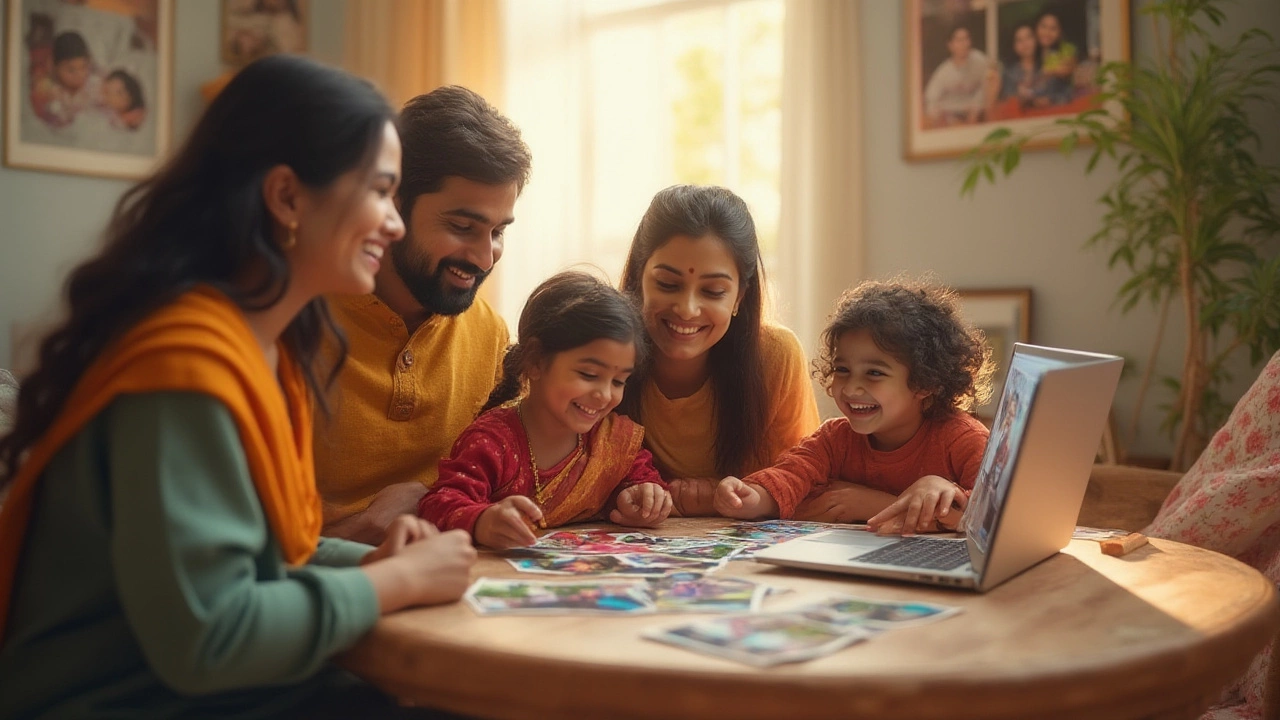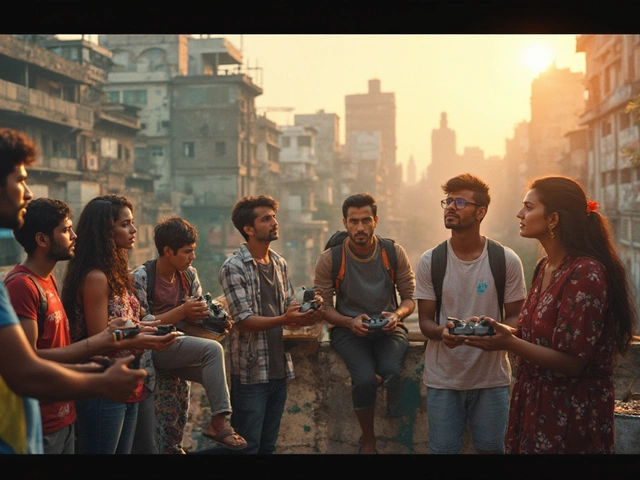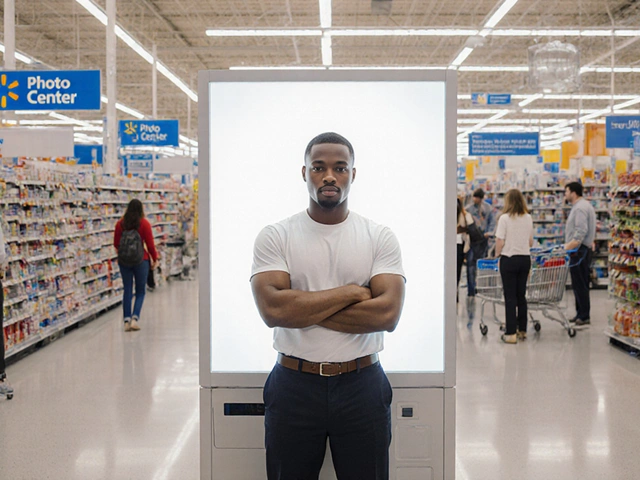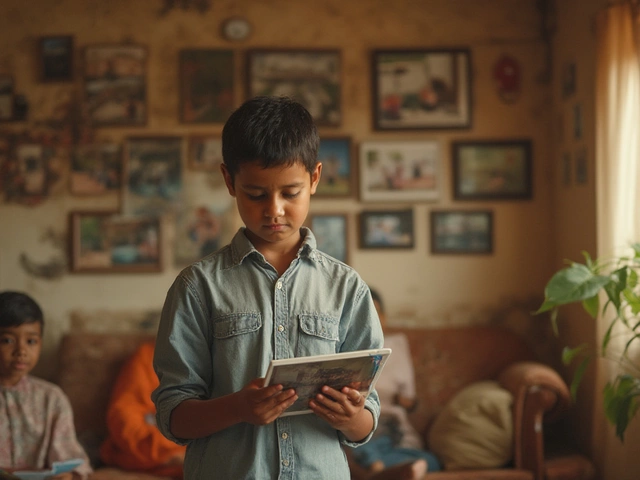Ever tried making a photo book only to discover your options look like cockpit software? You want something that doesn’t force you to binge-watch YouTube tutorials or throw your laptop across the room. The thing is, with hundreds of programs out there (both online and as apps), finding the easiest, most user-friendly one feels like another job. But you don’t have to wrestle with clunky layout tools or get stuck arranging photos forever. Simple, quick, and great-looking photo books are real—you just need to know where to look, which ones actually deliver, and what traps to avoid.
The Real Deal: What Makes a Photo Book Program "Easy"?
Let’s cut through the noise. When people say “easy,” they want photo book programs that do most of the heavy lifting for them. It means clear icons, drag-and-drop design, no-nonsense text tools, and guided templates that look like something a professional designer dreamt up. But there’s more to “easy” than just looks. Real talk: easy means fast uploads, not having to install new software, instant previews, and a checkout that doesn’t make you swear off DIY for life. The easiest apps are often web-based—think Mixbook, Shutterfly, and Google Photos—because you don’t have to download anything or learn Photoshop-level skills. The best ones have auto-fill features. For example, Mixbook’s “Auto-Create” can build a whole album layout for you, complete with themed backgrounds, in under two minutes, leaving you with simple tweaks if you want. Google Photos, if you already back up your photos there, uses face and date recognition to sort images instantly. This gets you halfway done before you even start tinkering.
One fun fact: Shutterfly reports that 60% of their customers now make photo books on mobile rather than desktop. That’s not surprising since their app lets you start a book on your phone in line at the coffee shop, and finish it on your laptop at home fully synced. Beginners gravitate toward simple apps, and these companies have figured out that if users ever feel lost, they just leave. So they bake in tutorials, real-time chat support, and undo features so no one gets stuck. Do you want to upload from social media? Some apps, like Snapfish and Chatbooks, let you pull pics from Instagram and Facebook without re-downloading and uploading hundreds of files. That alone saves hours.
The most beginner-friendly programs do one thing exceptionally well: they keep the process fun and avoid that “overwhelmed” feeling that comes from too many choices. Instead of bombarding you with fonts and stickers, they offer just enough customization to make your album feel unique, not intimidating. If you’re curious what “too many options” looks like, some Photoshop and InDesign plug-ins let you do advanced photo book design—but honestly, unless you’re a pro graphic designer, you’ll be crying into your keyboard before your cover’s even set up. For almost everyone else, stick to web apps or actual mobile apps from big photo printing companies.
| Photo Book Program | Platform | Template Variety | Auto-Layout | User Rating (2025) |
|---|---|---|---|---|
| Mixbook | Web/App | 150+ | Yes | 4.8/5 |
| Shutterfly | Web/App | 70+ | Yes | 4.6/5 |
| Google Photos | Web/App | Limited | Yes | 4.4/5 |
| Chatbooks | App | 22+ | Yes | 4.7/5 |
| Snapfish | Web/App | 60+ | Yes | 4.5/5 |
The Big Players: Breaking Down the Easiest Photo Book Programs
So what about specifics? Let’s run down the most “effortless” tools regular people use to make quick, good-looking photo books—no dark tech magic, no “designer speak.”
- Mixbook – It’s like having a tiny design team in your browser. The Mixbook interface is slick and fast, with enough templates for literally any style—retro, kid-friendly, travel, seasonal. Their "Auto-Create" scans your batch of uploaded photos and builds a full book in seconds. Need to reorder pages? Drag and drop. Tiny tweaks, like cropping or background color, are one click. People love that their editor actually works on phones and tablets, and you get up to 250 pages per book, which is massive compared to the industry average of 100–150. Customer support is a live chat away if you hit a wall. The big draw here is the freedom to personalize without getting bogged down.
- Shutterfly – Major brand, massive template library, and probably the best for all-in-one solutions (cards, mugs, prints, etc.). Their Book Builder offers “Smart Autofill,” which arranges your photos so that nobody’s head is chopped off. You can make a book and order prints with the same account. The Shutterfly app is wildly popular for on-the-go edits. Downsides? Some users find the website slow during peak seasons, and the more design options you dive into, the easier it is to get distracted. But for a clean, guided process, it’s hard to beat.
- Google Photos – The master of minimalism. The Google Photo Books feature is for people who want near-zero fuss. If you back up your photos with Google, just hit "Photo Books," select your pics (they’re sorted by date/album automatically), and everything lays out on neutral white backgrounds. Limited style choices, but for pure ease—especially if you want something printed fast with zero guesswork—it’s almost unbeatable. Tip: Google’s auto-enhance often makes images pop on matte paper, so you rarely have to edit before printing.
- Chatbooks – Brilliant for chronic procrastinators and busy families. Their signature product is the "Monthly Minis" subscription—$5 for a mini softcover book of your recent smartphone pics, printed and shipped automatically. No design process, really—it’s opt-in autopilot. For more creative control, their standard photo books are app-based, and adding, removing, or reordering photos is honestly the simplest I’ve ever tried. Zero design clutter, and you can add short captions from your phone’s keyboard. The books have a limited size and customization, but the total effort is laughably small.
- Snapfish – Been around for ages and keeps things extremely simple. Their browser tool has a gentle learning curve, and the app is even more straightforward. Snapfish’s drag-and-drop is quick, with playful layouts (think holidays and pet albums). They run the most frequent deals—half-off books almost every month—making them attractive for bargain hunters. Some people find their print quality just average compared to Mixbook/Shutterfly, but ease-wise, there’s barely a learning curve.
Ever heard of "Cewe Photobook" in Europe or "Photobox" in the UK? Those regional giants have super simple interfaces too, but US-based users stick mainly to the big global brands above. Whether you want a hardcover, softcover, spiral-bound, or pocket-size version, these programs make it nearly impossible to mess up—we’re talking real-time previews, alignment snapping, and automatic cropping warnings, so your book never ends up looking homemade in a bad way. And if you want to switch from phone to computer during the process, all these programs auto-save projects to your account so you can pick up where you left off on any device.
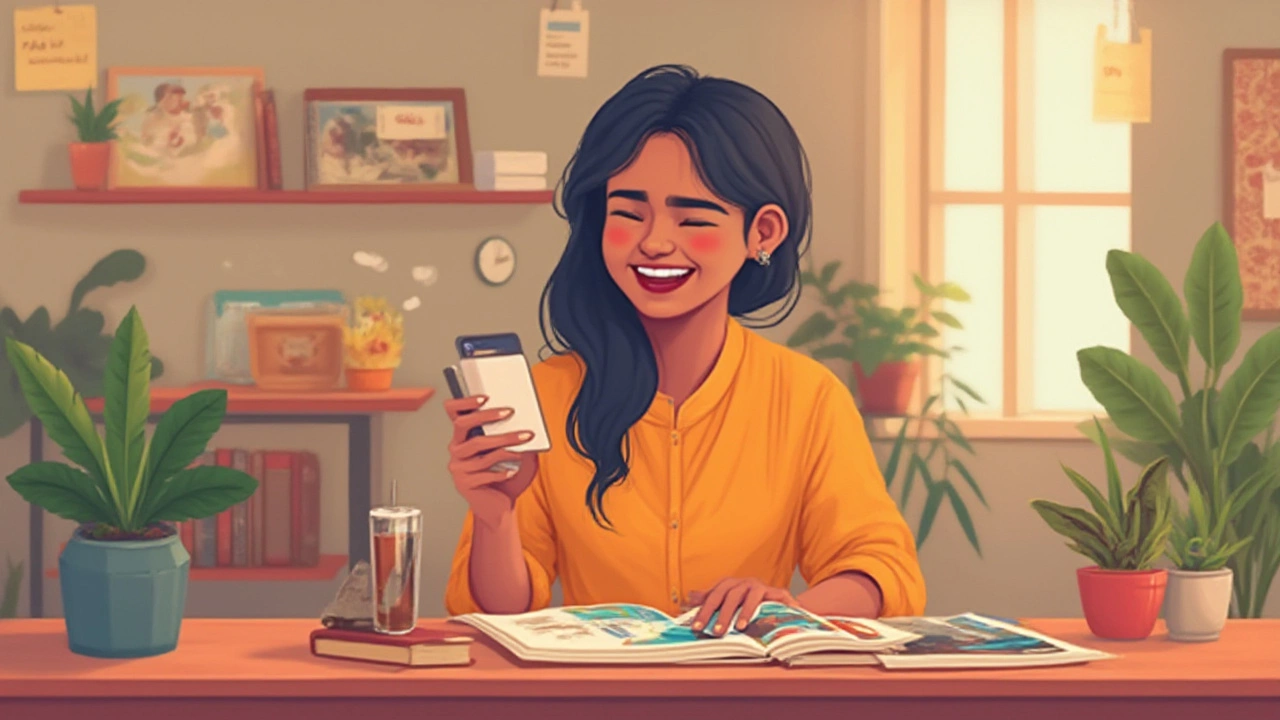
Must-Know Tips for Making Your First Photo Book Fast
Even the friendliest programs can’t fix messy photo selection or blurry shots. So here’s how to keep your project “easy” from the first click to the day your book arrives:
- Sort Your Photos First – Don’t upload 800 random vacation pics, hoping the app will magically know your best moments. Spend 10 minutes sorting your favorites into a new digital album first. Tip: If you’re using Google Photos or Apple Photos, both let you “heart” or “star” your best shots into a favorites album you can use to pull from instantly in photo book software. It saves massive frustration.
- Use Auto-Layout and Tweak, Don’t Overthink – All major programs’ "Auto-Fill" or "Auto-Create" tools get you 80–90% done. Trust them to arrange most things for you. Then adjust just the moments you care about: swap out a bad facial expression, stretch a panorama across two pages, or resize a key group shot.
- Keep Captions Short – People skim. The easier it is to write captions in the app, the more likely it is that you’ll include those inside jokes, names, or places that make your photo book feel personal. But keep captions to a single line—long text blocks mess up layouts and look overwhelming, especially on smaller sizes.
- Play with Preview Mode – Every program worth trying lets you see your book as a digital flip-through. Try it at least twice, once when you think you’re done, and again after a half-hour break. That fresh look helps you catch blurry uploads and layout oddities you’d miss after staring for too long.
- Double-Check Your Order – Sounds basic, but you wouldn’t believe how many people click “Order” and then spot a typo in their wedding book title or put the wrong year on a graduation album. Treat your cart like a test—scroll through every thumbnail at checkout. Almost nobody regrets double-checking.
- Watch for Promotions – Mixbook, Shutterfly, and Snapfish are always running coupon codes, especially around back-to-school, holidays, or graduation. If you’re not in a rush, signing up for a new account or email list will usually trigger a 30–50% off code in your inbox within an hour or two.
Not sure which style fits your photos—a classic minimal white background, or splashes of color and fun graphics? Most programs have a “try me” mode where you can swap templates partway without losing your work. I tested this with Mixbook in March 2025, and switching from “black tie wedding” to “rustic family picnic” took all of ten seconds. That freedom lets you experiment before you hit order—no need to settle for the first style you pick. And don’t underestimate the power of a single full-page photo in the middle of your book—these are the moments that always get comments when people flip through.
The cool part: every company on our list guarantees your print. If you get a misprinted photo, wrong pages, or a cover scratch, their customer service replaces it free. That safety net makes choosing the "easy" route low-stress. The only thing that isn’t easy? Deciding which batch of photos actually makes the cut.
Comparing Print Quality, Prices, and Special Features: Ease Isn’t Everything
It’d be great if ease were the only goal. But you definitely want your finished book to look and feel like something you’ll keep for years—not just a quick fix. Even among the friendliest programs, there are surprising differences in print quality, pricing, and extra perks. Let’s break it down for real-world buyers.
For print quality, Mixbook is pretty widely recognized as the gold standard for color accuracy, especially on glossy and layflat pages. They use a higher-end printing process and thicker paper options (standard 100# paper versus 80# in Snapfish), so colors pop and feel less like a brochure. Shutterfly is a close second, though their photo books occasionally run slightly warmer (yellower tones) based on user reviews and my own orders over the past year. Snapfish and Chatbooks aren’t bad at all—perfect for everyday photobooks or gifts—just don’t expect thick artbook vibes if you’re paying the base price.
Now, about cost: on average, a basic 8x8-inch, 20-page photo book from these companies, before discounts, looks like this:
| Brand | Standard 20-page Book | Layflat Upgrade | Shipping Time |
|---|---|---|---|
| Mixbook | $28.99 | $15 extra | 6-8 days |
| Shutterfly | $24.99 | $20 extra | 7-9 days |
| Google Photos | $14.99 | N/A | 5-7 days |
| Chatbooks | $10.00 (softcover) | N/A | 7-10 days |
| Snapfish | $12.99 | $6-15 extra | 5-8 days |
Notice Google Photos and Chatbooks are cheap but offer fewer design tweaks, while Mixbook and Shutterfly run pricier with all the bells and whistles—think foil stamping, premium velvet covers, thicker pages, etc. Tip: Mixbook gives 50% off for almost every holiday (Valentine’s, Mother’s Day), making premium books affordable if you time your order.
What about standout extras? Some Snapfish and Mixbook templates include travel maps, calendars, and QR codes you can use to link to digital albums or highlight videos—an underrated feature if you like blending digital with print. For folks printing wedding albums, Shutterfly now prints on "pearl shimmer" paper for high-end shine, while Mixbook and Chatbooks focus on durable everyday books. Google Photos nails simple, archival-safe printing, ideal for baby albums, memorial books, or travel collections you want to last decades without yellowing.
If you’re a creator making photo books for clients, Mixbook offers custom branding (your logo, not theirs) for business accounts. That’s a micro-niche, but another reason they dominate pro recommendations. And all these platforms ship globally, so you can send a memory book to anyone, anywhere—perfect for birthdays or long-distance gifts.
Don’t forget, most apps now save your custom layouts so you can easily rerun a book next year (“Annual Family Album 2024,” then “2025,” etc.) without starting over. If you’re short on time, Chatbooks’ subscription model is unbeatable—a new book arrives every month with almost no effort after setup. Handy for busy parents and over-scheduled travelers who want their photos off their phones and onto the coffee table.
Bottom line: the easiest photo book program is whichever fits your style, your photo stash, and your patience level. My top picks for truly beginner-friendly, zero-headache books are Mixbook (for creative freedom, pro-level prints), Google Photos (for absolute basics), and Chatbooks (for set-it-and-forget-it books). Don’t overthink it—the hardest part is usually just picking your favorite memories. The rest? Leave that to the software.
